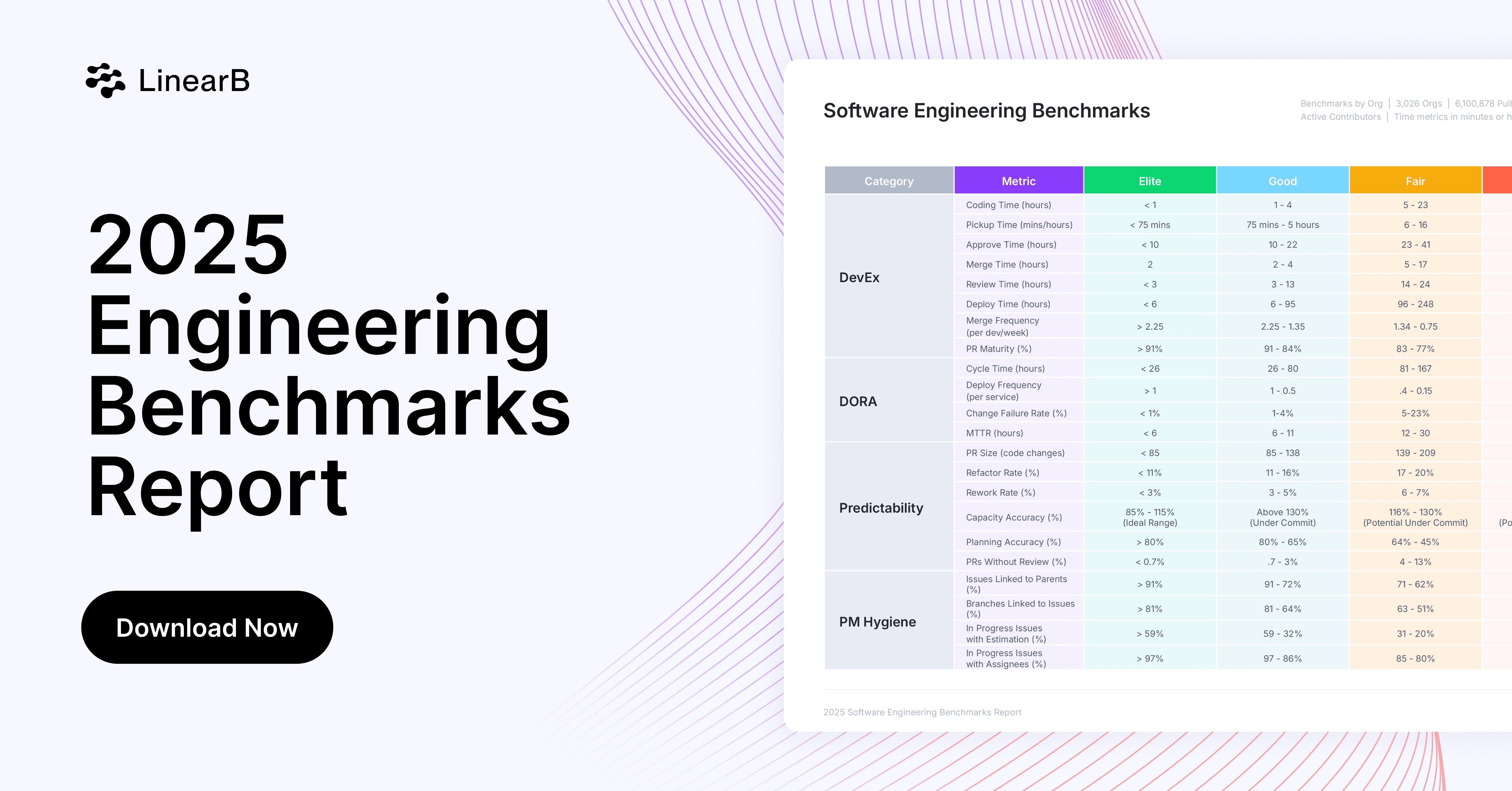Efficiency isn’t enough to remain competitive; companies that dominate their market also execute with exceptional quality. Knowing how to balance these priorities can differentiate between being a market leader and being disrupted by a competitor who performs better than you.
Measuring developer productivity is a relatively new concept, so it's common to meet engineering leaders who need help pinpointing the metrics that will significantly impact quality and efficiency. Our 2025 Software Engineering Benchmarks Report identifies one metric that stands out: cycle time.
We analyzed over six million pull requests from 3,000 organizations, reinforcing why engineering leaders should prioritize cycle time as a critical benchmark. This article explores the significance of cycle time, its impact on efficiency and quality, and actionable steps for tracking and improving it within your teams.
Why Cycle Time Matters
Cycle time is typically defined as the period from the first code commit to production release. It originated as a lean manufacturing metric and has been applied to software engineering as part of the DORA metrics framework. It measures the time from when work starts to when software is delivered and provides a clear view of how long it takes teams to turn ideas into deployed software.
The value of cycle time lies in its simplicity and universality. Shorter cycle times equate to faster feedback loops, more iterative development, and quicker time to market. Cycle time is more than a measure of speed; it’s a litmus test for team collaboration, process efficiency, and code quality.
The Efficiency Cascade Effect of Cycle Time
A confluence of factors can create a cascading effect on cycle time, and the 2025 report provides insight into the interrelations of multiple efficiency metrics. Specifically, larger PRs have a longer pickup time, meaning they wait longer for someone to start a code review. Further, longer pickup times correlate with a longer review time; a major contributing factor is that larger PRs are modified more heavily during the review process.
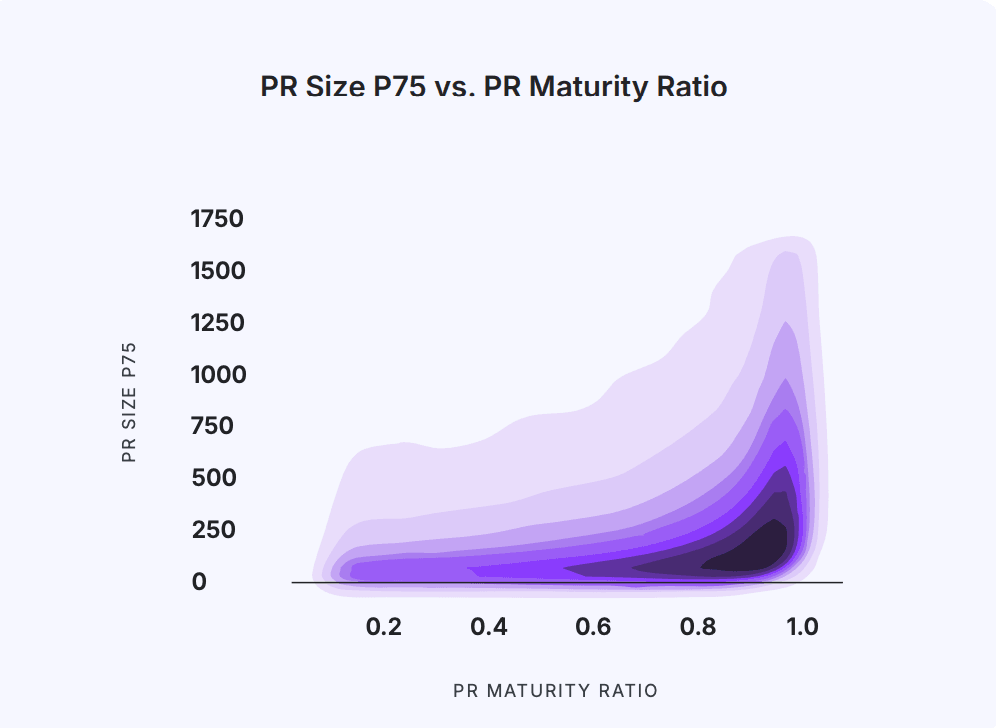
Cycle time is a lagging indicator that helps you identify delivery bottlenecks, empowering you to address the problems contributing to inefficiency snowballs. Conversely, organizations that actively set and track PR size goals tend to achieve better overall efficiency because this is a leading indicator for cycle time.
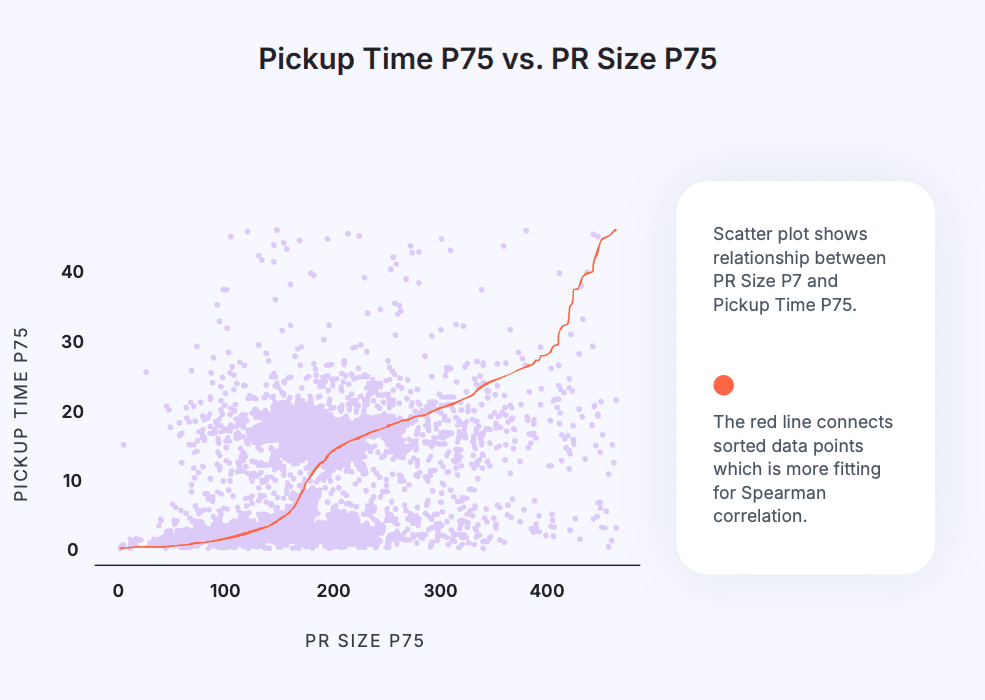
The Surprising Link Between Cycle Time and Software Quality
It’s easy to draw a correlation between cycle time and software delivery efficiency, but the 2025 report offers some of the most compelling evidence of the correlation to software quality that exists to date. The report revealed a fascinating insight: teams with elite cycle times also experience significantly lower Change Failure Rates (CFR).
Specifically, organizations in the elite category for cycle time are half as likely to fall in the lowest category for CFR.
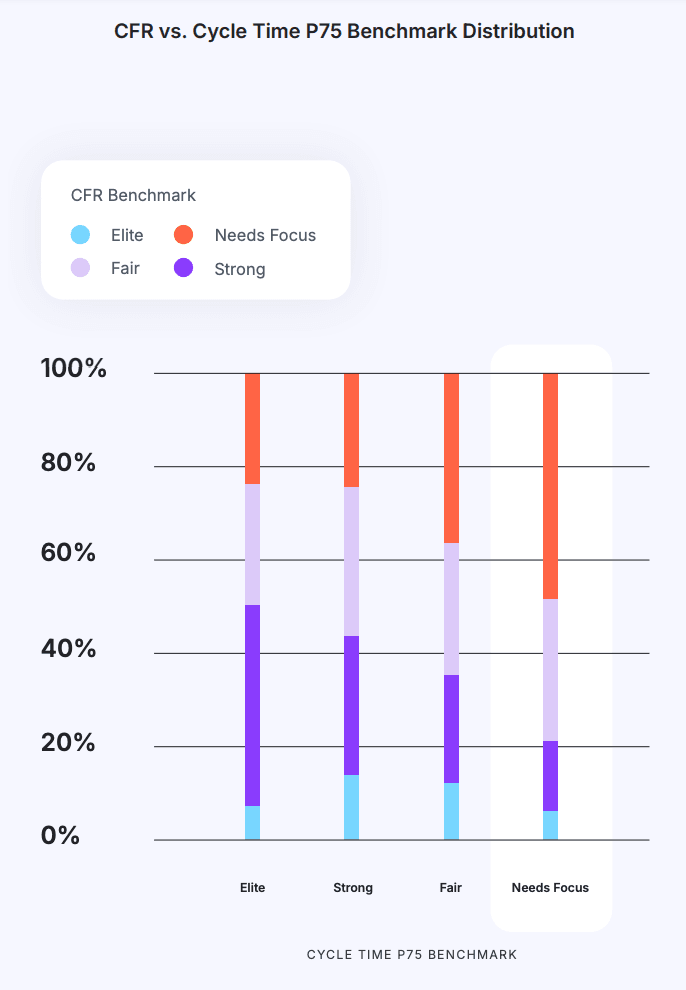
A similar relationship exists between deploy time and CFR, reinforcing that faster teams maintain higher software quality.
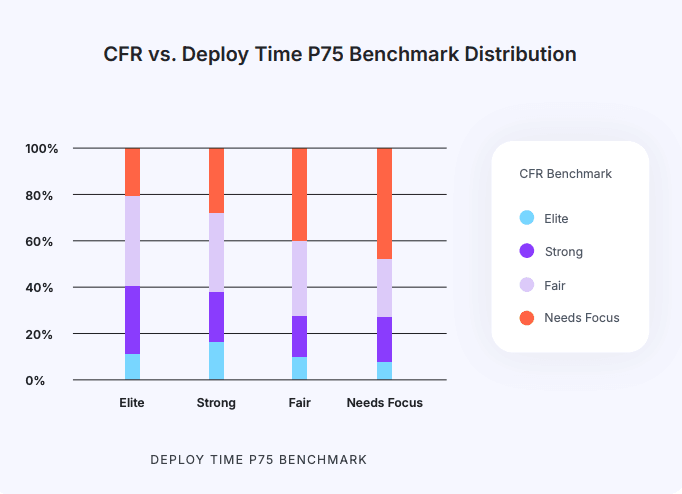
The takeaway is that focusing on cycle time creates a virtuous cycle: shorter cycles improve efficiency and reduce the likelihood of defects, boosting overall software quality.
How to Monitor and Improve Cycle Time
We recommend cycle time as the first metric engineering leaders should focus on when assessing productivity because it touches the primary components of the development process. Fortunately, cycle time is relatively easy to monitor if you take some critical steps.
Establish Standard Definitions
Tracking cycle time begins with clear definitions of when work starts and ends. However, these definitions may vary across teams. Some teams consider work “in progress” when someone creates a task in a project management tool, while others wait until someone assigns it in a sprint. For some, work is complete when code reaches production; for others, it’s when code lands in a pre-release branch.
The key is alignment; teams must agree on definitions to make cycle time metrics actionable.
Once you’ve established definitions, teams can visualize cycle time by integrating their git repositories and project management tools with an SEI platform. These platforms provide granular insights into where delays occur, enabling you to take targeted action. The most crucial factor is that your chosen platform allows your engineering teams to use specific definitions for when work starts and finishes.
Avoid Misuse
While cycle time is invaluable for team-level insights, it’s not a tool for evaluating individual performance. Every software cycle involves inputs and outputs that are outside the control of the individual developers. Additionally, comparing teams without considering their context can lead to misguided conclusions. Some teams ship large volumes of code quickly, while others provide targeted support to complex environments; you should evaluate both situations within their complete context.
Start Your Developer Productivity Journey With Cycle Time
Cycle time isn’t just a productivity metric; it’s a strategic lever that drives efficiency and quality across the software delivery lifecycle. As our benchmarks report demonstrates, focusing on cycle time yields compounding benefits, from faster feedback loops to lower defect rates.
The path forward is clear: prioritize cycle time, equip your teams with the right tools, and foster alignment around how work is defined and delivered. Doing so will improve your team’s output and enhance their confidence and cohesion, cornerstones of a thriving development culture.
If you haven't already downloaded your copy of the 2025 Software Engineering Benchmarks Report, download it here to see how your team's cycle time stacks up to similar organizations.


